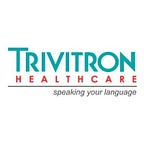Radiation Protection Essentials: Safeguarding Healthcare Professionals with Radioprotective Accessories
Introduction:
Exposure to X-rays not only poses a threat to the skin but also heightens the risk of developing cancer. The imperative need for shielding the body with radioprotective accessories and radiation protection aprons cannot be overstated. In the realm of healthcare, these protective measures become paramount, especially for physicians engaged in interventional procedures that expose them to harmful radiation beams emitted during medical imaging processes.
Physicians’ Protection Gear:
Healthcare practitioners performing interventional procedures are particularly susceptible to radiation exposure. Therefore, wearing a comprehensive set of protective gear is crucial. This includes radiation protection aprons, gloves, thyroid collars, protective headwear, and radiation protection glasses.
Full Body Protection:
To mitigate the adverse effects of ionizing radiation, full-body protection is recommended when working in imaging environments. Utilizing appropriate radiation protection clothing and devices effectively reduces the scattered dose received by physicians during their medical duties.
Importance of Wearing Radiation Protection Aprons and Accessories:
Radiation protection aprons serve as critical shields against harmful radiation in the radiology department and operating suites. Properly fitted garments that cover both front and backscatters are essential to ensure maximum protection. Well-fitted radiation protection aprons, coupled with thyroid shields, eyewear, and gloves, guarantee safety from the detrimental effects of medical rays.
Equivalent Shielding for Radiation Beams:
The necessity for shielding against direct harmful radiation beams requires at least 0.50 mm of lead equivalent protection for different body parts.
Shelf Life of Radiation Protection Aprons:
Regular inspection of radiation protection aprons is imperative to identify defects. These aprons should be replaced immediately upon detecting holes, tears, or cracks, as their life expectancy is typically 2–3 years. The shielding material may suffer damage over time, leading to cracks and holes that may not be visible. Therefore, routine checks every three months are advised.
Lightweight and Comfortable Aprons:
Addressing the issue of discomfort caused by heavy radiation protective garments, Trivitron has introduced Lightweight Radiation Protection Aprons. Crafted from lighter-weight radioprotective materials like antimony and bismuth, these aprons utilize nanoparticle technology, reducing weight by 10%. Ideal for prolonged surgeries, these aprons prioritize both safety and comfort for medical professionals.
Ways to Check for Damage:
Regularly inspecting protective gear is crucial. Physical tests, touch tests, visual inspections, and tactile tests, which include fluoroscopic images to detect holes or changes in uniformity, are recommended. Common damage sites include the waist and lower part of the apron. Regular inspections of other protective devices, such as gloves, thyroid shields, and eyewear, are also essential.
Increasing Shelf Life:
Proper storage significantly impacts the lifespan of radiation protection aprons. Hanging them on special hangers or storing them flat, avoiding folds that could lead to cracks, is crucial. Trivitron offers mobile storage systems with hangers, ensuring optimal storage conditions.
Radiation Safety Awareness:
With the rapid evolution of diagnostic and fluoroscopic technologies, radiation safety education and awareness have become imperative. Strict adherence to guidelines and measures is crucial to reduce radiation exposure for healthcare professionals and patients. Regular annual inspections are essential to assess the maintenance and efficacy of personal protective equipment, safeguarding against even minimal direct or indirect radiation exposure.
In conclusion, understanding and implementing radiation protection essentials are fundamental to ensuring the safety and well-being of healthcare professionals in their crucial roles. With advancements in protective gear and increased awareness, the healthcare industry can continue to provide quality care while minimizing the risks associated with radiation exposure.
